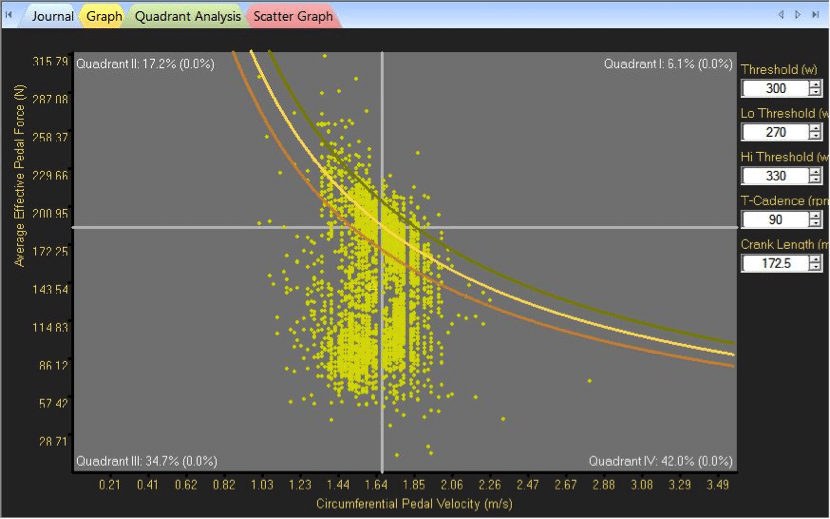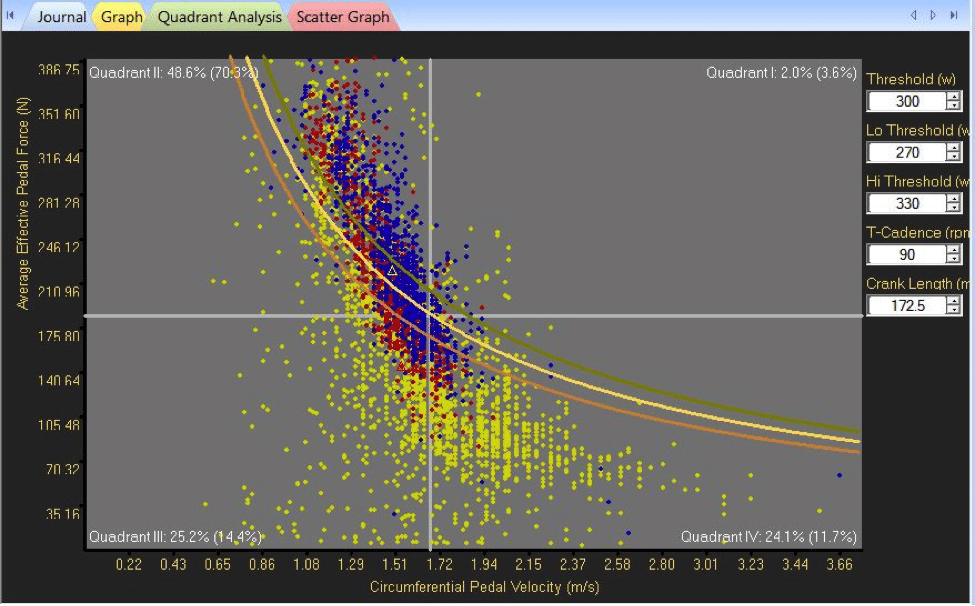Developing Power, Fitness, and Agility to Climb Hills Fast
It’s a very special day in a cyclist’s life when the prospect of riding uphill is met with a smile instead of a sense of dread. It’s special because a great deal of work is required to reach this day, and because it means there are no remaining obstacles to having a great ride every time you get on your bike. Well, except headwinds. Our goal is to get you to the point where you look forward to climbing, not for ways around the hills.
To become a great climber, you have to move beyond the simple notion that a higher sustainable power output – or a higher power/pace at lactate threshold – is the be all and end all of going uphill fast. It’s important, for sure, but it’s only one component of creating a great climber. We separate the demands of climbing into three categories: energy systems, agility, and pacing. Building sustainable power at lactate threshold is the primary goal in the energy system category, and the best way to do that is with repeated climbing efforts at a pace at or just below your lactate threshold pace/heart rate/power output. A very common workout for this is three 12-minute ClimbingRepeat intervals separated by 5 minutes of easy spinning recovery. This is what cyclists have been doing for decades, and it’s not sexy or cool, but it works.
The downside to focusing solely on energy system development is that you end up with fitness that only partially matches the real-world demands of climbing hills – whether they’re short gut-busters, unrelenting rollers, or mountain passes. The images below illustrate what we mean. They are examples of a quadrant analysis of a lactate threshold interval workout (A) and a 3-mile climb near Colorado Springs (B). Basically, a quadrant analysis in TrainingPeaks WKO+ software plots the incidence of specific force and leg speed (cadence) points on a graph. Lower-cadence, higher-force points are in the upper left; higher-cadence, lower-force points are in the lower right. The horizontal and vertical crossing point provides a reference, in this case 300 watts at 90 rpm.
In the quadrant analysis of a lactate-threshold interval workout, there is a relatively centralized mass of points at right around 300 watts and 90 rpm. This is typical of an interval workout because power and cadence are specifically prescribed. The points nearer the bottom of the plot represent the recovery periods between the intervals.
In contrast to a structured lactate threshold workout, the quadrant analysis from our local 3-mile climb features a much less centralized grouping of points. Due to the fact that the pitch of the climb changes frequently and that it includes a few switchbacks, there is a significant presence of lower-cadence, higher-power points compared to the steady efforts from the structured workout. These are the accelerations, surges, and out-of-the-saddle portions of the climb.
Part of great climbing pacing is learning when to use your power and when to recover on a climb. Ideally, if you’re trying to get up a climb as fast as possible, your goal should be to use a bit more power on steep sections and little less on flatter sections, but minimize the number of wild fluctuations in power output. Our sample rider can maintain 300 watts for a 20-minute climb. His fluctuations should ideally be about 315 on steep sections and 285 on flatter sections, not 400 on the steeps and then 200 because he’s cooked. Over time, the goal would be to use the interval workouts (A) to increase power at threshold, which would move the curves in B upward. In the real world, hard climbs create plots like B, and a higher threshold power means you can keep more of your efforts below threshold and minimize the gap between your extreme efforts and your sustainable ones.
► Free Cycling Training Assessment Quiz
Take our free 2-minute quiz to discover how effective your training is and get recommendations for how you can improve.
What happens to riders whose training looks like A gets onto a real climb? Well, if they haven’t also included efforts that resemble B in training, they will have the power to climb well but lack the technique to keep their efforts close to the middle curve. This often means they’re overgeared (points far to the upper left) in places and undergeard (points to the lower right) or they fatigue and lose both power and cadence (points to the lower left).
Agility – which is the ability to handle frequent changes in pitch and power output – and pacing go hand in hand. The more time you spend climbing, the more you’ll experience the variability inherent in real-world climbs, and you’ll develop some level of agility that enables you to minimize power fluctuations when you want to go steady and accelerate when it’s time to attack or respond. You also develop greater resistance to fatigue, so the surges and accelerations don’t result in as much of a decline in sustainable power output during the same climb. But what about athletes who can’t spend a lot of time climbing hills, either because you live in a relatively flat area or because your time constraints mean most or all of your mid-week training is done on the trainer? You need to insert a wider variety of power and cadence options into your threshold interval workouts. Try the workout below twice a week as you’re preparing for a specific challenge that includes a lot of climbing.
Agility-building OverUnder Workout
During a 60-90 minute endurance ride, incorporate three 10-minute OverUnder intervals. During the first one, alternate between SteadyState intensity and ClimbingRepeat intensity each minute (first minute SS, second minute CR, third minute SS, etc.). Take 5 minutes easy spinning recovery after the interval. For the second 10-minute interval, alternate between SS intensity and PowerInterval (full-throttle) each minute. Take 5 minutes easy spinning for recovery. Then for the third interval, return to alternating between SS and CR Intensities each minute. Click here for more detailed descriptions and Power/HR calculations for the intensities.
► FREE Mini-Course: Learn How to Maximize Your Limited Training Time
Learn step-by-step how to overcome limited training time and get faster. Walk away with a personalized plan to increase your performance.
"*" indicates required fields




Comments 2
I’m on it, thanks CTS
Good